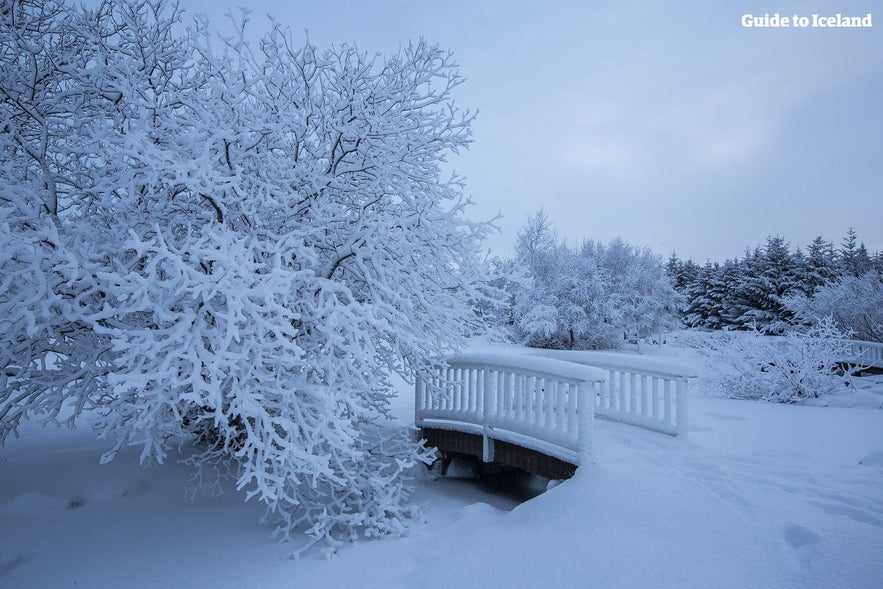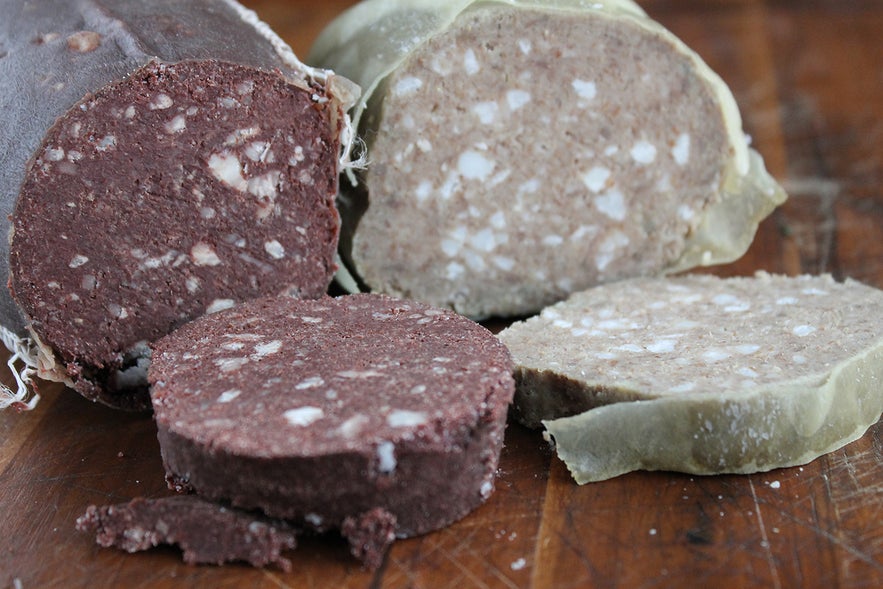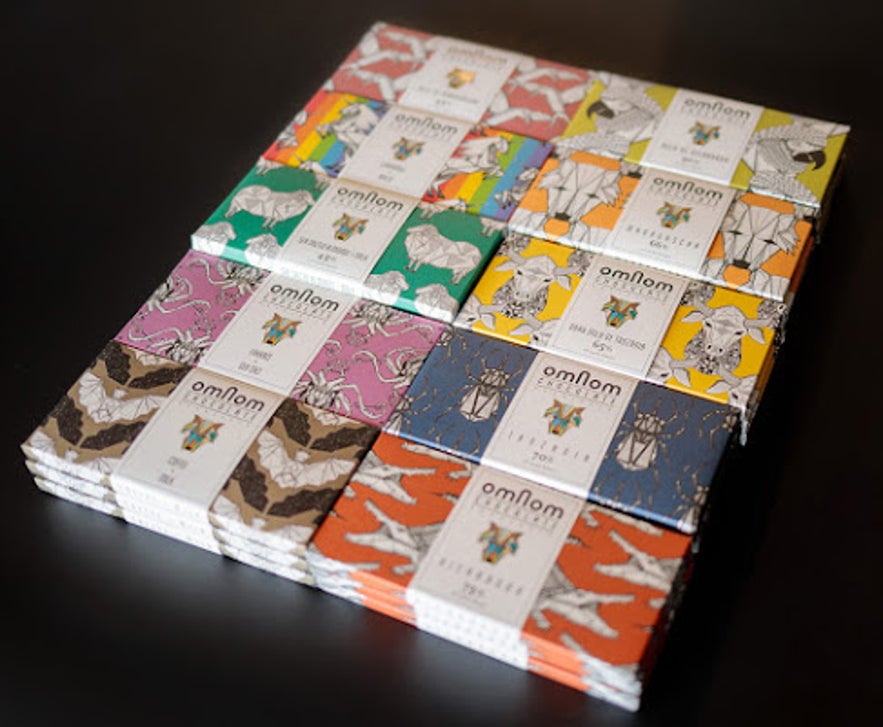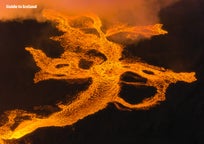
Comida Islandesa: La Guía Definitiva de la Cultura Gastronómica Islandesa
- What Do They Eat in Iceland?
- Traditional Icelandic Food
- Icelandic Fish and Seafood
- Icelandic Bread
- Icelandic Sweet Bread
- Icelandic Lamb
- Icelandic Skyr
- Infamous Icelandic Meats
- Puffin Meat
- Whale Meat
- Infamous Traditional Food in Iceland
- Thorlaksmessa - Fermented Skate
- Slatur - Icelandic Liver Pudding
- Hakarl - Fermented Shark
- Svid - Boiled Sheep Head
- Hrutspungar - Pickled Ram Testicles
- Icelandic Sweets and Confectionery
- Icelandic Ice Cream
- Lakkris - Icelandic Liquorice
- Icelandic Alcohol
- Brennivin
- Icelandic Liquor
- Icelandic Craft Beer
- Modern-Day Icelandic Food
Descubre la gastronomía islandesa y qué comer en Islandia con esta guía exhaustiva. ¿Cuáles son los rasgos que caracterizan a la cocina islandesa? ¿Por qué comida es conocida Islandia? ¿Es verdad que los islandeses solo comen pescado seco y tiburón fermentado? ¿Qué deberían probar quienes visiten Islandia? Sigue leyendo y conoce los ingredientes que hacen a la cocina islandesa tan única.
Puedes encontrar una gran variedad de restaurantes en la capital de Islandia, así que asegúrate de reservar alojamiento en Reikiavik si quieres adentrarte en la cultura gastronómica del país. Para salir de la ciudad, recomendamos reservar un coche económico para conducir dentro de Reikiavik y a las afueras. Para conocer a fondo la cocina islandesa, puedes reservar un tour de gastronomía islandesa con un guía local que te llevará a diferentes lugares para probar exquisiteces.
-
Prueba algunos de los MEJORES platos en Islandia con este Tour Gastronómico a Pie en Reikiavik
-
Conoce algunas de las más Deliciosas Recetas Islandesas
-
Descubre la cultura islandesa leyendo acerca de La Historia de Islandia
En el pasado, los recursos en Islandia eran escasos y poco frecuentes. La falta de luz solar limitaba enormemente la posibilidad de cultivar. Además, no existían muchos animales salvajes que cazar y la ubicación remota de la isla en el círculo polar ártico hacía que la importación de alimentos resultara complicada. Así pues, la cultura gastronómica de Islandia es simple y refleja las duras circunstancias naturales a las que tenían que hacer frente los islandeses para sobrevivir durante siglos.
Luckily, Iceland is surrounded by the bountiful North Atlantic Ocean, and the country is blessed with fresh water and a clean natural environment. With new technology and renewable geothermal energy, it’s also possible to have freshly-grown, locally-sourced ingredients year-round. But Iceland’s traditional food remains popular with locals and visitors alike.
In today's Iceland, you can find almost anything your culinary heart desires. Restaurants around the country offer a wide variety of foreign and Icelandic dishes inspired by locally-sourced ingredients in the surrounding nature.
- See also: The Best Restaurants in Reykjavik
What Do They Eat in Iceland?
What do Icelanders eat? The most typical food in Iceland involves fish, lamb, or Icelandic skyr (a type of yogurt). These have been the main elements in the Icelandic diet for over a thousand years.
Icelandic meals are commonly meat-based due to the lack of farmable lands in the past. But geothermally-heated greenhouses make vegetables more accessible, allowing modern chefs to become more imaginative, infusing new ingredients into old recipes.
Read on to discover traditional Icelandic food and things to eat in Iceland.
Traditional Icelandic Food
Icelandic Fish and Seafood
 Photo from Golden Circle and Icelandic Food Tour
Photo from Golden Circle and Icelandic Food Tour
As an island nation, nothing has been more vital to these people's survival than fish. Fish is an integral part of Icelandic culture and heritage and a staple of traditional Icelandic food.
Fishing not only put food on the table, but exports also helped transform the country from one of the poorest in Europe at the beginning of the 19th century to one of the richest today.
- See also: Fishing in Iceland
As refrigeration methods improved, fresh fish became more and more noticeable in the nation’s diet. In the 1950s and 1960s, Icelanders still ate fish every day, with some opting for this ubiquitous staple even for breakfast. Today, Icelanders eat fish on average twice a week, and over half of the population consumes fish oil, or "lysi," at least four times a week.
Pictures of fish decorate Icelandic coins, and the country has even fought wars over fishing rights. Fish has been Iceland’s typical food from its founding until today and will likely remain so in the future.
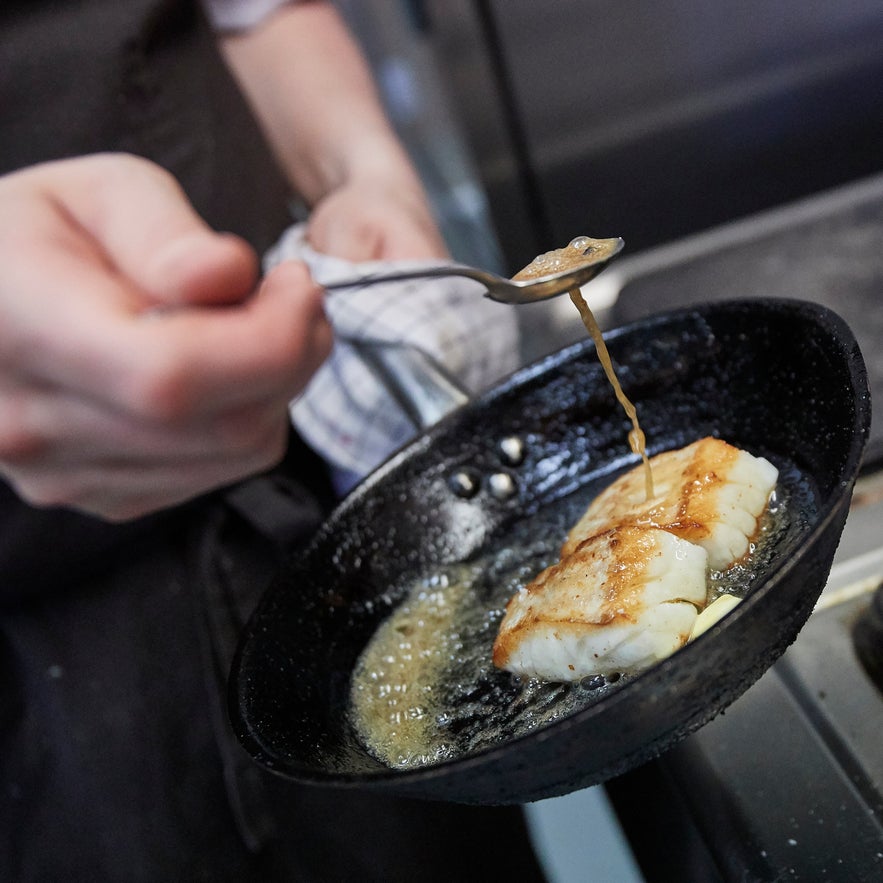 Photo from Von Mathus
Photo from Von Mathus
- See also: Disgusting Icelandic Food & Delicacies
Most restaurants in Iceland serve a "fish of the day." The country is dotted with numerous seafood restaurants, mainly serving cod, haddock, salmon, and monkfish. Modern chefs in Iceland are masters at creating excellent dishes, infusing the ocean’s bounty with herbs and spices found in Icelandic nature. You can find many great fish dishes and traditional Icelandic foods in Reykjavik. But aside from a great meal at a restaurant, you should try out the following foods.
Hardfiskur - Stockfish
Hardfiskur or stockfish is available at any grocery store or the Kolaportid Flea Market. They’re eaten as snacks straight out of the bag or with butter spread on them. Although people don’t eat it quite as much today, stockfish remains a staple and popular traditional food in Iceland.
Before the turn of the 19th century, grain was hard to come by in Iceland. It needed to be imported from Denmark, making it too expensive for most Icelanders. Whatever grain or flour they could get was put in gruel to make it last longer, and bread was considered a luxury.
This scarcity meant that instead of eating a piece of bread with a meal, as was customary in neighboring countries, Icelanders ate dried stockfish.
 Photo by Þormóður Símonarson
Photo by Þormóður Símonarson
This protein-rich food is produced using fresh fish, mainly haddock, Atlantic wolffish, or cod that has been caught by angling using live or artificial bait. After cleaning and deboning, the fish is hung up to dry. Traditionally, this was done outside, near the ocean, where winds blow salty air through the product. This method takes about four to six weeks, but thanks to modern technology, the time can be shortened to 36 to 48 hours.
Plokkfiskur - Fish Stew
"Plokkfiskur" is an Icelandic fish stew that is a simple mix of white fish, potatoes, onions, flour, milk, and seasoning. But recently, some recipes also include chives, curry, bearnaise sauce, or cheese.
Humar - Icelandic Lobster

"Humar" refers to Icelandic lobster or langoustine. They’re usually caught in the south coast waters, and these langoustines are known for their tasty, tender meat. You can find it grilled, baked, fried, or even as a pizza topping.
Icelandic Bread
The settlers in Iceland were stubborn folks, which was perhaps necessary when living in a land of fire and ice. For centuries, the people tried living their lives as they would back in Scandinavia, as a pastoral society, raising cattle and sheep, and growing grain to harvest for bread and fodder.
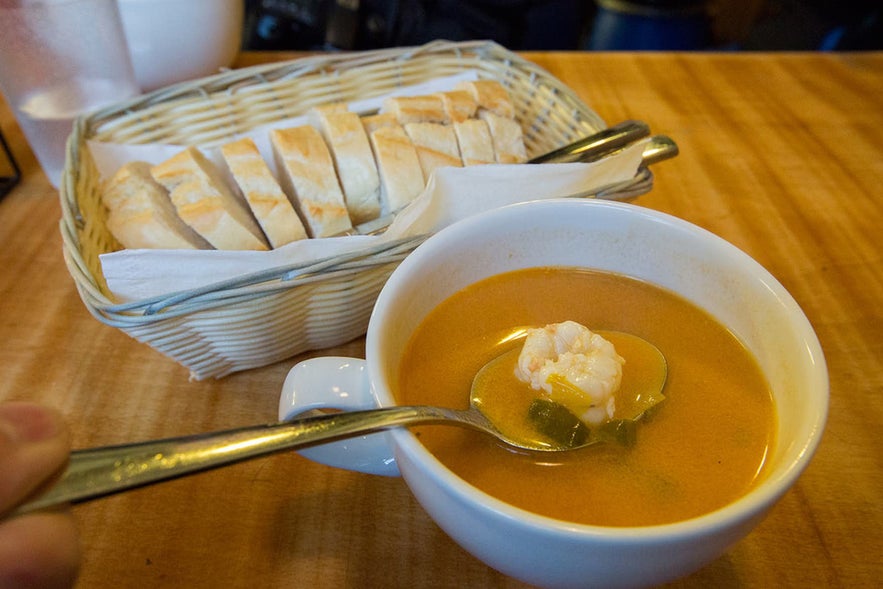 Photo from Private 3 Hour Traditional Icelandic Food Tour of Reykjavik with an Expert Guide
Photo from Private 3 Hour Traditional Icelandic Food Tour of Reykjavik with an Expert Guide
The farming methods of Vikings significantly impacted the Icelandic landscapes as wide-scale erosion began along with deforestation, which left much of the country barren. Therefore, little could grow in Iceland except for a few hearty vegetables like potatoes, turnips, carrots, cauliflower and cabbage — but almost no grain.
Iceland was never a self-sufficient grain-producing country again. In some places, barley could be grown, but the yield was often meager due to the Icelandic weather.
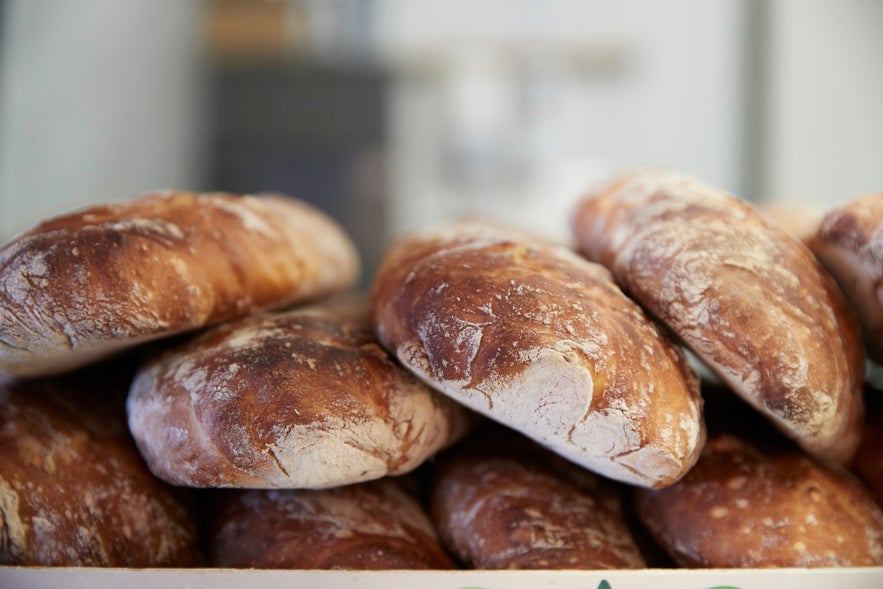 Photo from Von Mathus
Photo from Von Mathus
After a period known as the "Little Ice Age," almost all grain cultivation in Iceland disappeared. It wasn’t until the 20th century that grain farming began again, with barley making up most of the grain harvest. But today, you can also find a few oat farmers around. As virtually no grain grew in Iceland, it had to be imported, making it very expensive.
Ovens were almost unknown due to a lack of firewood. So, the only people who could afford bread were very wealthy. In fact, the country didn’t have a professional baker until the early 19th century. Despite the lack of grain, ovens, and bakers, Icelanders still have a few signature bread varieties that remain popular today.
Laufabraud - Leaf Bread
Many families make "laufabraud," or leaf bread, before Christmas. It’s a very thin, round flatbread decorated with leaf-like geometric patterns. Families spend time creating beautiful patterns in the bread before quickly frying it in a pan. They then serve "laufabraud" with butter during Christmas dinner. Due to its close association with the holiday, it’s also known as Icelandic Christmas bread.
- See also: Christmas in Iceland
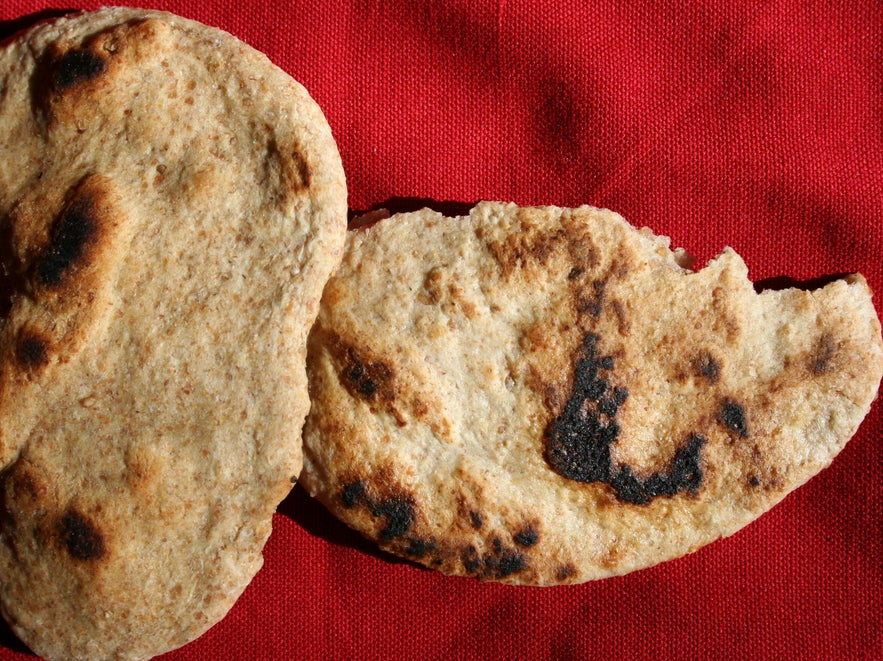 Photo from Wikimedia, Creative Commons, by Jonathunder. No edits made.
Photo from Wikimedia, Creative Commons, by Jonathunder. No edits made.
Flatkaka - Rye Flatbread
Another traditional bread is "flatkaka," a thin, round, rye flatbread with a distinct pattern. The tradition of baking "flatkaka" is believed to go back to the age of settlement (around 1000 AD) when it was baked on hot stones or straight on the fire’s embers.
This method helped create the bread’s signature spotted pattern. However, later, small but heavy cast iron frying pans were used instead.
Rugbraud - Icelandic Rye Bread
If you visit the country, don't forget to try Icelandic rye bread or "rugbraud," a dark, sweet-tasting bread with a thick consistency and no crust. Tradition dictates it’s baked in a pot placed on the embers of a dying fire, then covered in turf and left to stand overnight.
Another way to make "rugbraud" is to bury the pot near a hot spring and let the geothermal heat bake the bread as seen in the video above. When this method is used, the bread is usually called "hverabraud" or hot-spring bread.
Rugbraud is perhaps best paired with fish (and an essential side with the aforementioned "plokkfiskur" fish stew), but you can also eat it on its own. Both "rugbraud" and "flatkaka" are delicious topped with mutton pate, butter, cheese, pickled herring, or smoked lamb.
Icelandic Sweet Bread
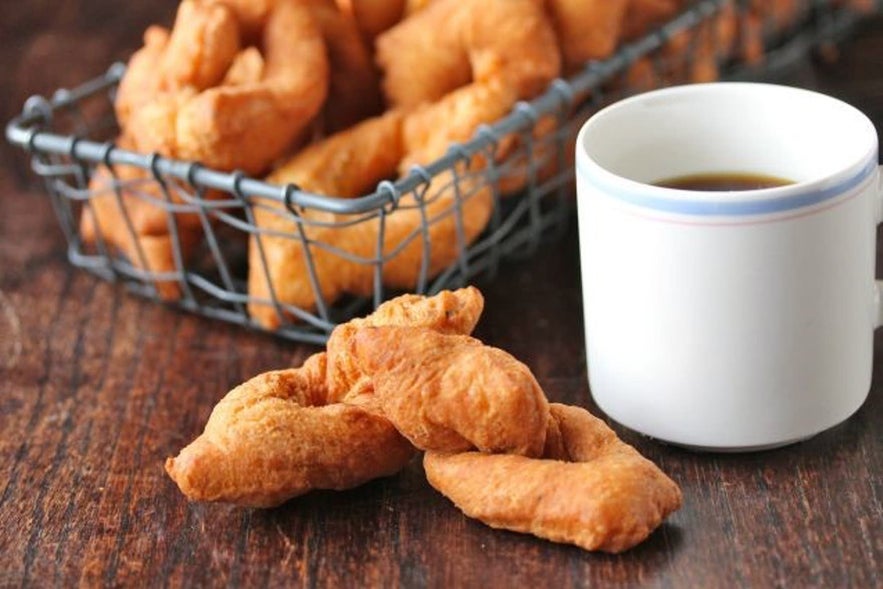 Photo from Golden Circle and Icelandic Food Tour
Photo from Golden Circle and Icelandic Food Tour
In the 19th century, sugar was introduced to the Icelandic diet, and for years, it was considered necessary nutrition. At that time, ovens were more common, and even a few bakers were around.
When visiting Iceland, the traditional "flatkaka" and "rugbraud" bread are must try's, but you should also go to a bakery or a cafe to try the following modern(-ish) sweetbreads.
Snudur - Sweet Bread
"Snudur" is a cinnamon-filled bread covered in chocolate, caramel, or sugar glaze.
Ponnukokur - Icelandic Pancake
Also known as Icelandic pancakes, "ponnukokur" is thin, crepe-like pancakes usually served rolled up with a good amount of sugar or carefully folded with jam and whipped cream.
Vinarbraud - Icelandic Viennoiserie
"Vinarbraud" is a popular type of viennoiserie pastry in Iceland, inspired by a classic Danish pastry. The Icelandic version is like a long Danish, with layers of glaze, jam, almonds and custard.
Icelandic Lamb
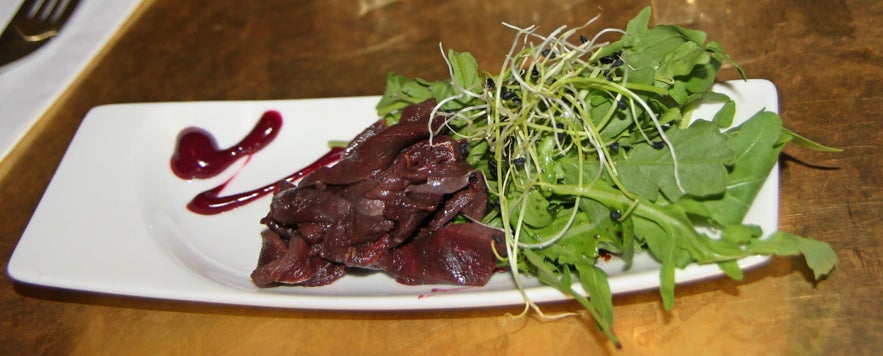 Photo from Guided 3-Hour Reykjavik Food Lovers Walking Tour
Photo from Guided 3-Hour Reykjavik Food Lovers Walking Tour
Along with the fish, sheep have been the lifeblood of this nation since the Vikings’ arrival. Its wool has kept the people warm, and its meat has helped keep Icelanders alive through severe weather conditions.
The original settlers imported these animals, which have since been raised and bred in total isolation, unaffected by other breeds. Therefore, Icelandic sheep are sometimes called the "settlement breed."
Though famous for its wool used in "lopapeysa" wooly sweaters, the Icelandic sheep are mainly farmed for their meat. Each spring, the sheep are let out of their pen to roam freely around the countryside, spending the whole summer grazing in the pesticide-free wilderness.
Since the climate prevents grain growth, the sheep live on grass, angelica, berries, and seaweed. The meat thus requires little seasoning; it’s tender and has a mild flavor. Smoked, grilled, broiled, slow-cooked, in a kebab or a stir fry, you can find numerous Icelandic lamb variations throughout the country.
And as with the seafood, whatever you choose will surely be delicious.
Hangikjot - Smoked Lamb
 Photo by Martin Christensen, Wikimedia Creative Commons. No edits made.
Photo by Martin Christensen, Wikimedia Creative Commons. No edits made.
Though you can find fresh meat in grocery stores and on restaurant menus, a popular Icelandic food to taste is smoked Icelandic lamb or "hangikjot." Before refrigeration, smoking was a standard method used to preserve food. It not only allowed the meat to last, but it also added flavors.
Hangikjot, or "hung-meat," is named after the old tradition of smoking the meat by hanging it from a smoking shed’s rafters. There are two main smoking methods in Iceland, "birkireykt" and "tadreykt."
The material used in "birkireykt" is birch wood, while dried sheep dung is mixed with hay for "tadreykt." It’s not just "hangikjot" that is smoked this way. You can also find "tadreykt"-smoked salmon, sausages, and even beer.
"Hangikjot" is usually boiled and served either hot or cold in slices. It’s a traditional dish served at Christmas, usually accompanied by potatoes in bechamel sauce, green peas, red cabbage, and "laufabraud."
According to a recent study, around 90 percent of Icelanders eat this dish at least once during the holiday season.
A great Icelandic lunch choice is the "hangikjot" sandwich. The smoked lamb is thinly sliced and used as lunch meat served on sandwiches or traditional "flatkaka" bread.
Kjotsupa - Meat Soup
"Kjotsupa" is made of tougher bits of lamb, hearty vegetables, and various Icelandic herbs. Great on a cold winter’s day and a quick lunch option in cafes and restaurants.
Pylsa - Hot Dog
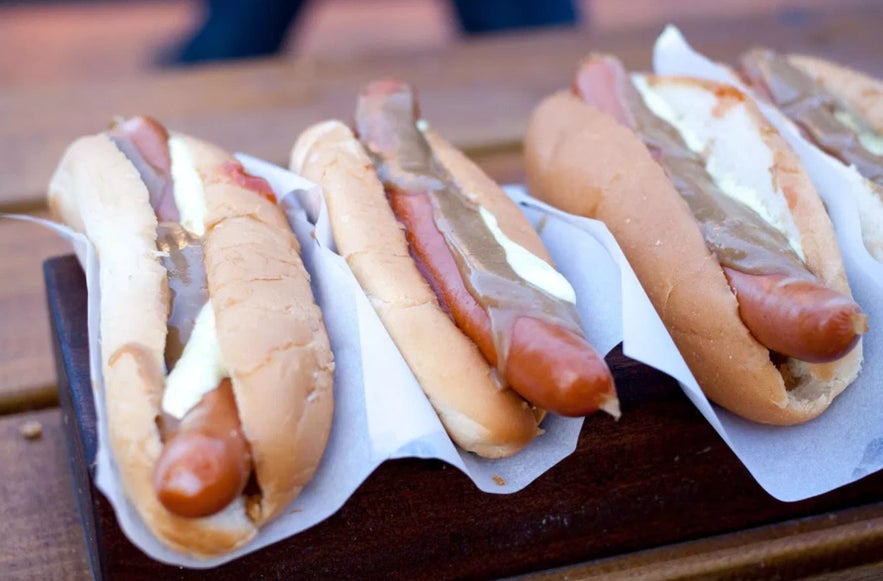 Photo from Small-Group 3-Hour Traditional Icelandic Food Tour in Reykjavik
Photo from Small-Group 3-Hour Traditional Icelandic Food Tour in Reykjavik
Also spelled "pulsa" and often listed as the top thing to eat in Iceland, it’s made from a lamb, beef, and pork blend. Try "ein med ollu" (one with everything), and you’ll get the hot dog with crunchy deep-fried onions, raw onions and topped with ketchup, sweet mustard, and creamy remoulade sauce.
Icelandic Skyr
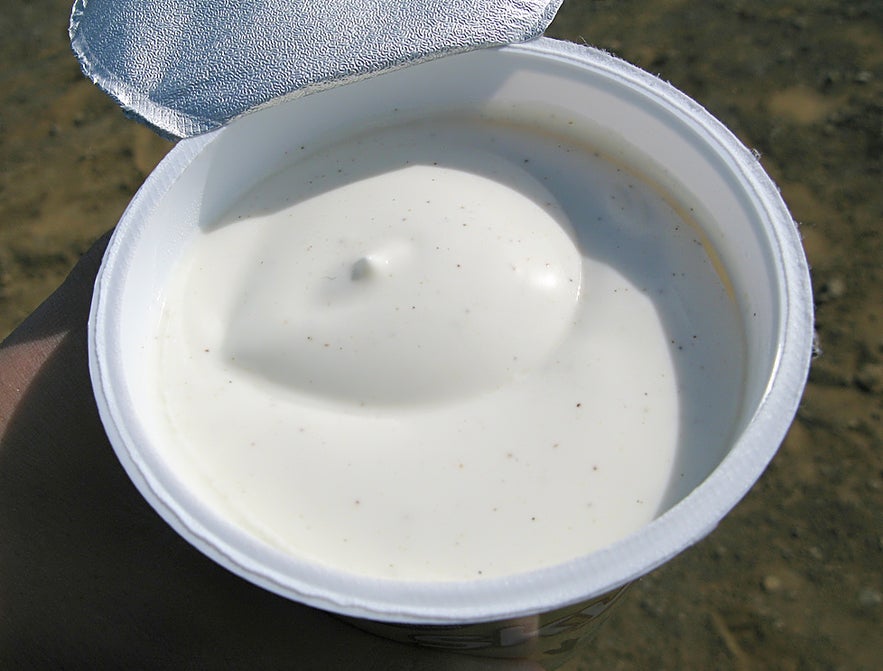
At the National Museum of Iceland, you can see three jars filled with what appear to be gray rocks. They’re a leftover meal of "skyr" from over a thousand years ago. "Skyr" is a traditional dairy product that resembles yogurt but is technically classified as cheese. When Vikings settled here, they brought with them the culinary traditions of their homeland.
These Norse dishes have evolved differently in each country, with each nation having its own variation. But "skyr" seems to have vanished entirely in Scandinavia while flourishing in Iceland. Today, you can even find it on shelves of grocery stores around the world.
The product is made by separating skim milk from the cream. The milk is then pasteurized, and live cultures from previous batches of "skyr" are added. When the product thickens, it’s filtered, and various flavors are added, like vanilla or berries and, more recently, mango, coconut, and even licorice.
It’s a traditional Icelandic breakfast choice but can be enjoyed as a meal at any time of the day. However, it has also served as a symbol of protest in recent years when people have hurled it at the Parliament building in anti-government demonstrations.
Infamous Icelandic Meats
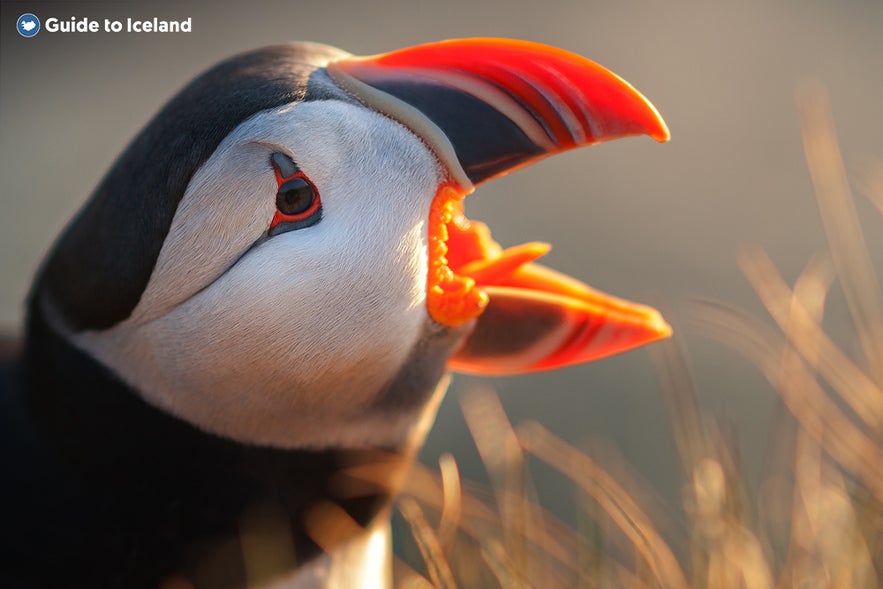
Besides lamb, you can also find traditional meats in grocery stores and restaurants, like pork, beef, and chicken. But don't be surprised if you see foal meat or even reindeer on restaurant menus.
You’ll likely come across some more items that might raise a few eyebrows on your travels around the country. These aren’t exactly a staple of Icelandic cuisine, but their novelty makes them popular foods in Iceland for visitors.
Puffin Meat
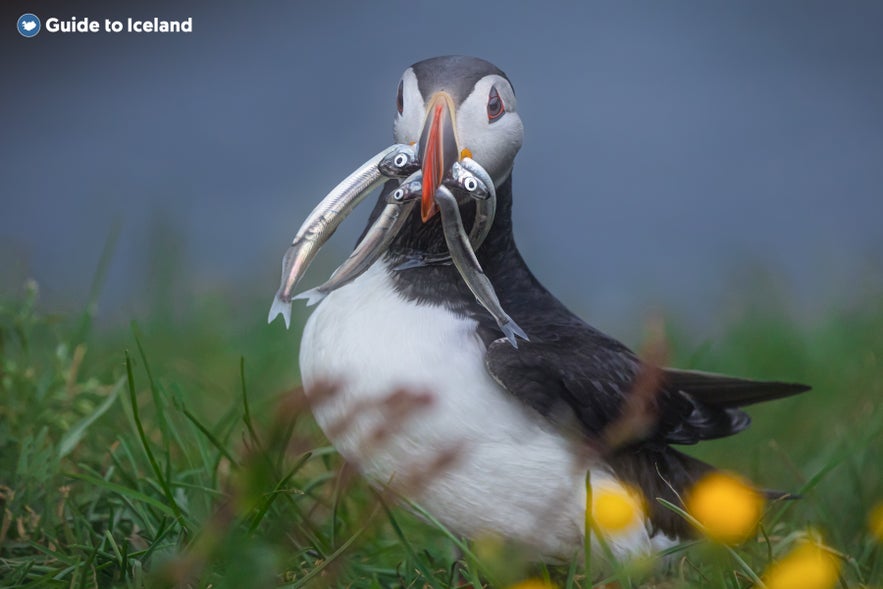
The puffin is Iceland’s most iconic bird and one that both tourists and locals love to see in the wild. So, many would find it strange that you can also find it on restaurant menus. In the past, struggling coastal communities like Iceland had to use all of their natural resources to survive. This survival included eating these adorable little birds.
While the Atlantic Puffin is now protected by legislation in other countries, Iceland and the Faroe Islands still allow puffin hunting. Thus, puffin has been a part of both nations’ diets for centuries and is considered a delicacy today.
Iceland is home to around 10 million puffins during the summer, with the Westman Islands archipelago hosting the largest breeding colonies. Just 6.2 miles (10 kilometers) south of the mainland, the islands hold around 20 percent of the world’s Atlantic Puffin population, making it the world’s largest puffin colony.
- See also Where to Find Puffins in Iceland
However, in recent years, the puffin colonies have started to decline. The decline is not believed to be because of habitat destruction or overhunting but because of several failed breeding seasons. Due to the dwindling numbers of birds, temporary restrictions on hunting have been made to protect the species. Puffin colonies are highly monitored, so you don’t have to worry if you see puffins on a menu. It’s still okay to hunt a few.
The meat from the bird is usually broiled or smoked and has a gamy flavor.
Whale Meat
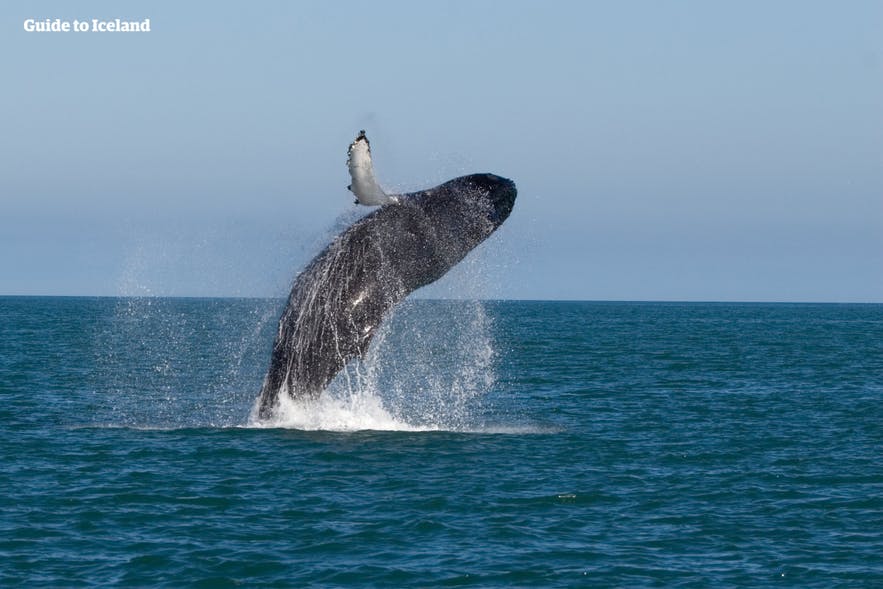
Whaling began in Iceland in the 12th century with spear-drift whaling. Spear-drift remained the primary method of hunting whales until foreign companies introduced the country to commercial whaling in the late 19th century, bringing new tools and technology.
The International Whaling Commission adopted a moratorium on commercial whaling that came into force worldwide in 1986. Unlike Norway, Iceland did not officially object to the ban and stopped commercial whaling that year. However, whaling for "research" continued until it was stopped in 1989, after much pressure from abroad.
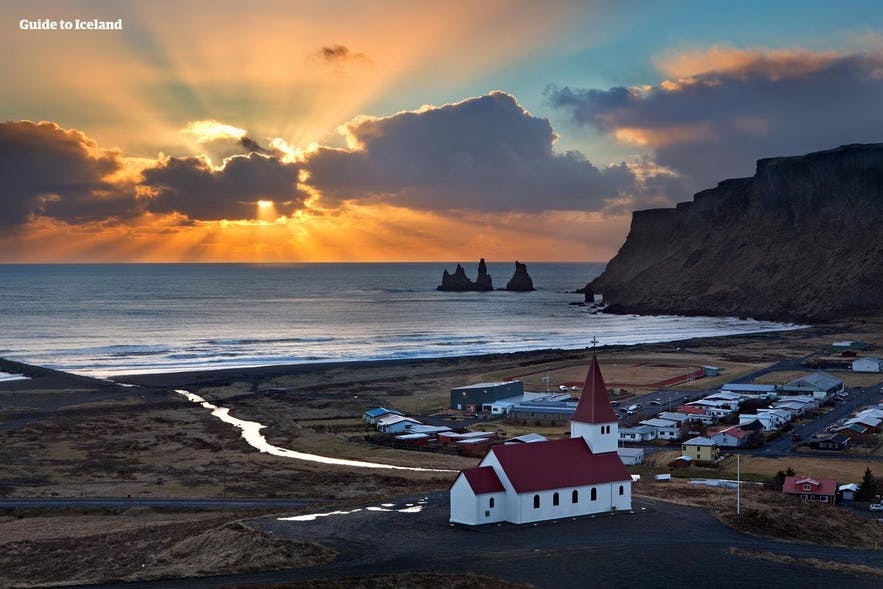
The Directorate allows whaling of both minke and fin whales. Minke whale meat is sold to local restaurants and grocery stores, but fin whales are sold to Japan. In the last couple of summers, no fin whales have been caught, and there were no plans to do so in future years.
Whale meat is not an everyday food in Iceland. The majority of whale meat is sold to restaurants in Iceland, primarily marketed toward tourists, despite some international opposition to the practice of whaling.
We recommend going on whale-watching tours, where you can see these fantastic creatures in their natural habitat.
Infamous Traditional Food in Iceland
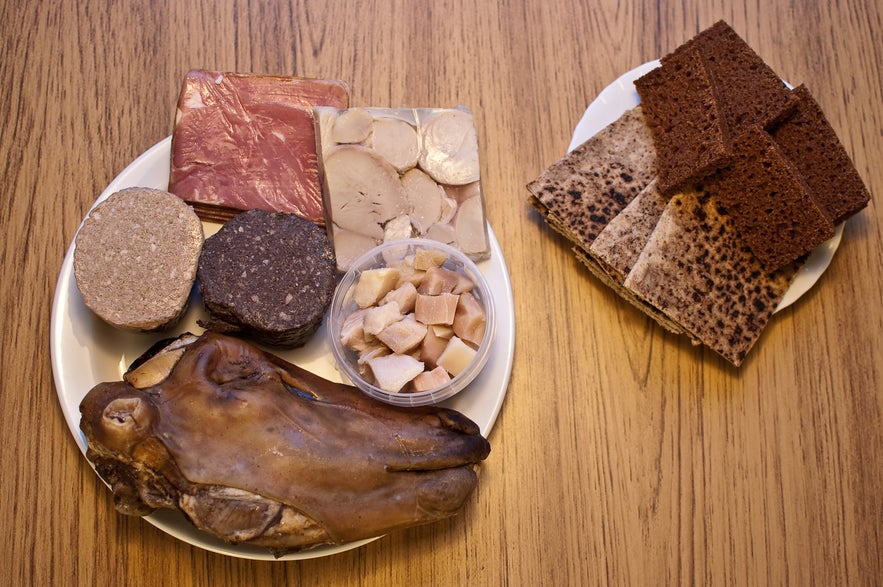
You might be thinking, "What kind of food do they eat in Iceland?" after reading that puffin and whale meat are a part of Icelanders’ diet. And the list of controversial traditional food in Iceland is a little longer.
Although you can find a whole range of culinary delights in Iceland, the nation has not forgotten the old ways of preparing food. Today, you can find traditionally cured meat in grocery stores and restaurants. Once a year, a midwinter festival associated with a selection of historical food is held throughout the country.
People often think of the traditional style of curing meat when they hear "Icelandic food." And it does sound scary. Fermented shark, pickled ram's testicles, and boiled sheep heads don't sound like things you put on a dinner plate. But these methods of preparing food were done out of pure necessity.
Fresh food from Iceland was rare during the winter, so to survive in this desolate and severe environment, the people had to preserve their food. Before refrigeration, methods like salting were used worldwide to preserve food. To produce salt from the ocean, you need to let the water evaporate.
Evaporation can be achieved by letting the water sit out in the sunlight or placing it over a fire. However, Iceland has precious little sunlight and even fewer trees to burn. The lack of vegetation also meant that animal products dominated Icelandic cuisine, and poverty prevented any part of the animal from being thrown away.
The meat and offal were preserved through the winter by using methods like pickling in fermented whey or brine, drying, and smoking, which gave the traditional country food its distinct flavor.
Thankfully, modern technology has replaced these old methods of storing food. However, many holidays are still centered around consuming these traditional foods in Iceland. Although some might look (and smell) scary, not all traditional Icelandic food tastes bad.
At "Thorrablot" gatherings, you’ll always find "hardfiskur" stockfish, "hangigjot" smoked lamb and "skyr," "rugbraud" and "flatkaka." If you're feeling adventurous, you should definitely try some of these Icelandic foods.
Thorlaksmessa - Fermented Skate
"Thorlaksmessa" (Thorlac's mass) is a celebration held the day before Christmas Eve. During that day, a fermented skate (a type of ray) is served with potatoes and tallow, and some Icelanders insist that Christmas doesn’t start until the dish is eaten.
Some don’t even mind the strong ammonia-infused odor that accompanies it, while others (understandably) avoid it like the plague. The taste, however, isn’t as strong as the smell, reminding some of the salted cod. However, getting past the smell is quite a challenge.
- Read more about Icelandic Christmas Traditions
Slatur - Icelandic Liver Pudding
Another festival that involves traditionally cured Icelandic food is "Thorrablot." It’s a mid-winter festival held to honor the customs of ancestors and is held in the Old Norse lunar month of "Thorri."
Icelanders gather, hold speeches, recite poems, sing, dance, and eat traditional Icelandic food from mid-January to mid-February. These dishes include, among others, boiled lamb heads, fermented shark, ram testicles, and "slatur," an Icelandic liver pudding.
Photo by Navaro, Wikimedia Creative Commons. No edits made.
It’s not uncommon for modern Icelandic families to get together and make their own "slatur" before a "Thorrablot." They make it from sheep’s blood or liver and kidneys, minced fat, oatmeal, rye, and spices.
There are two versions of slatur, "blodmor" which is a type of black pudding which has been eaten in Iceland since settlement times, and "lifrarpylsa" is a liver sausage that's similar to haggis.
"Slatur" is usually served with boiled potatoes and mashed turnips, and the leftovers are great with rice pudding topped with cinnamon. A few restaurants and cafes in Reykjavik offer a taste of traditional Icelandic food.
If you can, you should try and visit during the times of the "Thorrablot" festival, where you’ll find even more establishments offering these unusual treats.
Hakarl - Fermented Shark
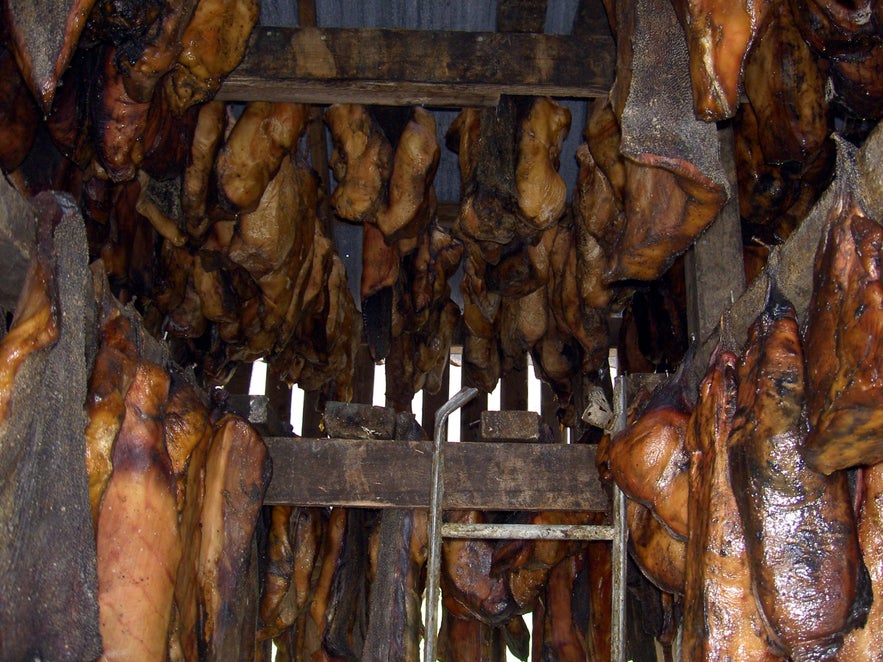 Photo from Wikimedia, Creative Commons, by Chris73. No edits made.
Photo from Wikimedia, Creative Commons, by Chris73. No edits made.
"Hakarl" is a fermented shark, usually made from Greenland sharks. These are poisonous when fresh as they contain a deadly amount of ammonia, but they are safe to eat after being buried in a hole to ferment for six weeks (and up to 12 weeks).
It’s then hung to dry for four to five months and then served in cubes. It’s customary to drink a shot of Brennivin (Iceland's national spirit) after eating Icelandic fermented shark to help get rid of the flavor.
Svid - Boiled Sheep Head
"Svid" is boiled sheep heads, usually cut in half with the brains removed and hair singed off. It doesn’t taste as bad as it looks (or sounds?) and is usually found in buffets served during the mid-winter festival.
However, Icelanders eat the eyes and tongue as well. The ears aren’t eaten because it’s associated with theft. The tradition was born out of not wasting any part of an animal when food is scarce.
Hrutspungar - Pickled Ram Testicles
"Hrutspungar" is pickled ram's testicles - boiled and cured in whey. There’s also a pate version that is easier to the stomach and can be spread on rye bread.
Icelandic Sweets and Confectionery
What do people in Iceland eat for dessert? Did you know that sugar was not available in Iceland until the late 19th century? From 1880, shortly after sugar importation began, and up until 1950, sugar consumption in Iceland increased by over 710 percent. It appeared to be love at first sight (or taste).
Icelandic Ice Cream
It doesn’t matter if it’s the dead of winter with freezing wind blowing and snow falling from the sky - Icelanders will still eat ice cream. You can find an ice cream parlor in almost every town in Iceland, with many located near a geothermal swimming pool, where it’s a popular treat after a swim.
Soft-serve ice cream is the most popular kind. But don't just get plain ice cream. Dip it in a hard-shell dip, usually made of chocolate, and then cover it in small-sized candy. This approach is known as "is med dyfu og kurli."
If you want to go extreme, order a "bragdarefur." This is when soft ice cream, usually vanilla, is put in a large container, though some places offer other varieties. You’ll then choose three types of candy and or fruits on display at the parlor’s counter. The whole thing is then put in a large mixer, more candy is added on top, and voila! You’ll have the ultimate Icelandic ice cream treat.
Lakkris - Icelandic Liquorice
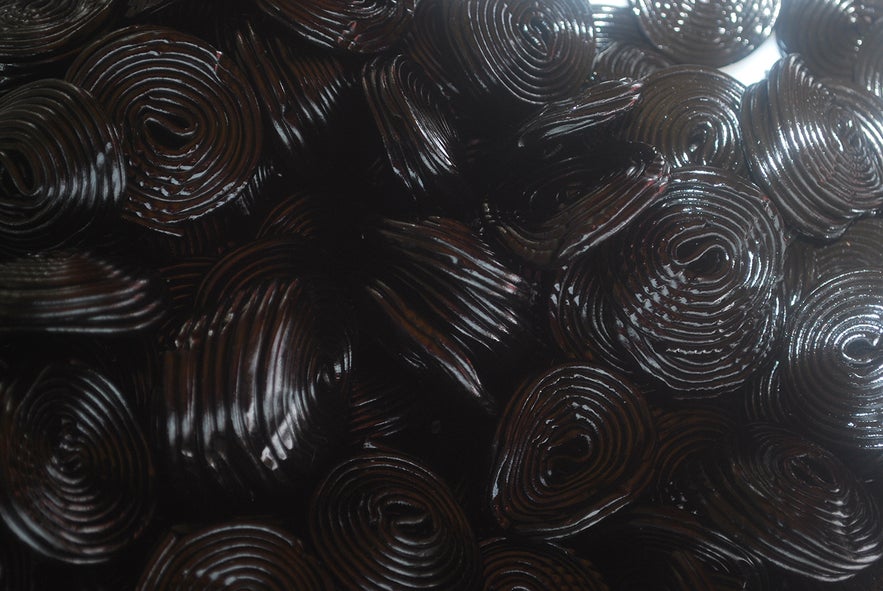
Browsing the candy aisle in supermarkets, you’ll notice that many Icelandic sweets contain salty licorice or "lakkris." The most popular kind is chocolate-covered licorice, but you can also find strange combinations like licorice-powdered raisins, dates, and almonds.
Of course, there’s licorice ice cream, which you can dunk in hard-shell licorice dip and cover with licorice powder (although most would agree that’s a bit overkill). This salty black treat has even made its way from the candy aisle into regular food. There’s licorice salt, licorice sauce for lamb, and even licorice cheese.
The obsession began a few centuries ago when licorice was introduced to Iceland by Scandinavians. Icelanders had no honey and no sugar, so this root was used to satisfy the country's sweet cravings. The root was also believed to help with colds, so it was used by Icelandic pharmacists who added it to cough syrups and lozenges to combat various ailments.
In the early 20th century, wars and import restrictions deprived the country of foreign sweets. Therefore, Iceland manufactures its own sweets, often using (you guessed it) licorice.
You can get foreign sweets in Iceland, but the Icelanders still prefer their salty candy. So, when visiting the country, "lakkris" is something you should try.
Here are some of the nation’s favorites:
- Draumur and Thristur - chocolate-covered licorice bars.
- Opal - licorice lozenges that have been around since 1945.
- Appolo Stjornurulla - a liquorice and marzipan roll.
- Lakkrisror - a licorice straw used to drink soft drinks
- Gammeldags Lakrids - pure, salty liquorice.
Icelandic Alcohol
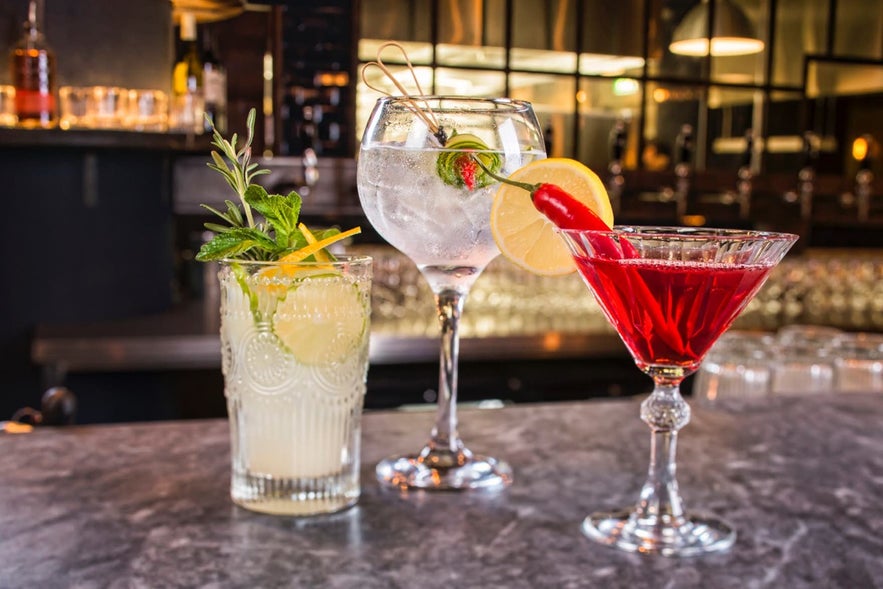 Photo from Guided Reykjavik Cocktail Tour with 3 Complimentary Drinks & Reserved Tables at 3 Bars
Photo from Guided Reykjavik Cocktail Tour with 3 Complimentary Drinks & Reserved Tables at 3 Bars
The Icelandic settlers drank mead and ale, and for centuries, it was the most popular alcoholic drink in the country. When grain production in Iceland was dying down in the Middle Ages, imported beer became popular.
However, after importation restrictions from Denmark (who ruled Iceland at the time), it became cheaper to import schnapps and potato vodka, which became the drinks of choice for Icelanders. At the turn of the century (1900), attitudes toward alcohol shifted, and a prohibition on all alcohol took place in 1915. The ban was partially lifted in 1921, thanks to Spain.
At the time, Iceland’s biggest export was salted cod, and Spain threatened to stop importing the product unless Iceland imported Spanish wine. So the ban was amended, allowing red wine and rosé from Spain and Portugal.
However, it didn't take long for people to undermine prohibition. People smuggled alcohol into the country, and they passed around a popular home-brewed drink known as "landi." Doctors would even prescribe patients alcohol, with wine for the nerves and cognac for the heart.
In 1935, spirits and all wine were allowed, but not beer, which was believed to increase casual drinking.
With the rise of city break holidays abroad in the 1970s, interest in beer started to grow as people would visit pubs and bars on their travels. Then finally, on March 1st, 1989, after a push from the public, beer was allowed in Iceland again. The date is known as Beer Day and is celebrated each year by opening a beer or two.
- Read more about Beer Day in Iceland
Brennivin
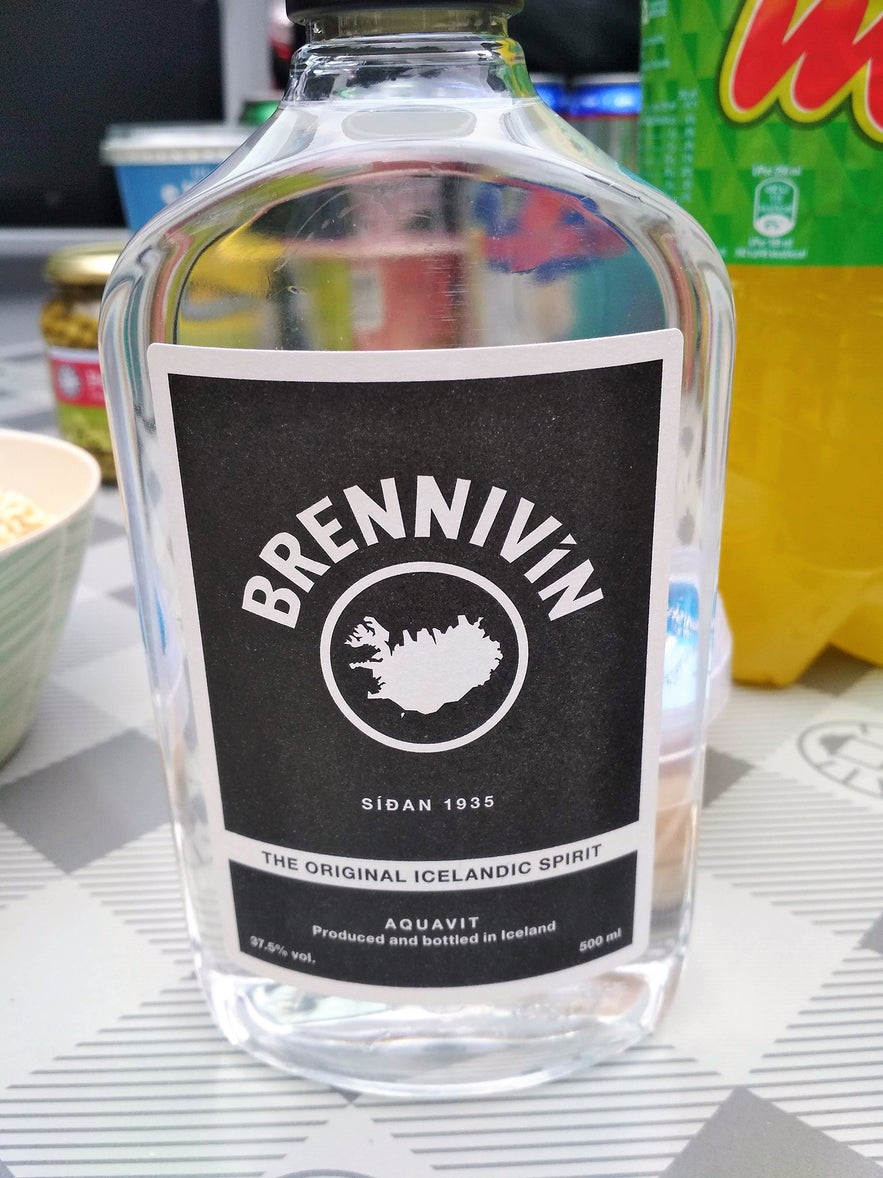
In 1935, the government of Iceland produced Brennivin, a clear, unsweetened akvavit schnapps flavored with caraway to celebrate the end of the prohibition. The bottle contained a white skull on a black label to warn people of the high alcohol content, which earned the product the nickname "Svarti Daudi" or "Black Death."
Eventually, an outline of Iceland replaced the skull, but the black label became one of the nation’s most recognized brands. The drink is considered Iceland's signature distilled beverage and is produced by the Egill Skallagrimsson Brewery today, which still uses the same old recipe and the trademark black label.
A handful of other companies make the drink, modernising the recipe and infusing the caraway flavor with ingredients like angelica and dulse.
 Beers from Borg Brewery. Photo by James Brooks at Flickr
Beers from Borg Brewery. Photo by James Brooks at Flickr
Icelandic Liquor
Many distilleries in the country produce schnapps, vodka, or gin inspired by what they find in Icelandic nature. Go to any cocktail bar in Reykjavik and get a cocktail with a liqueur made with ingredients such as birch, rhubarb, or crowberries.
But when visiting Iceland, you should check out these items (just remember to drink responsibly):
- Opal flavored vodka shots - this is licorice alcohol. This drink is based on the popular licorice lozenges. You can also get one called Topas, which is equally tasty.
- Floki Whiskey - Icelandic whiskey made only from Icelandic ingredients (including home-grown barley). You can even get it smoked "tadreykt" (in sheep dung).
Icelandic Craft Beer
In recent years, craft beers have swept the nation. You can find high-quality Icelandic craft beers at the ATVR alcohol store and numerous bars around the country. You should try at least one of them.
There’s a great selection of local Icelandic beers to try and plenty of bars in Reykjavik to explore as well, allowing you to take in both the taste and the culture at the same time.
- If you love beer, take a bath in it at Bjorbodin Beer Spa
Modern-Day Icelandic Food
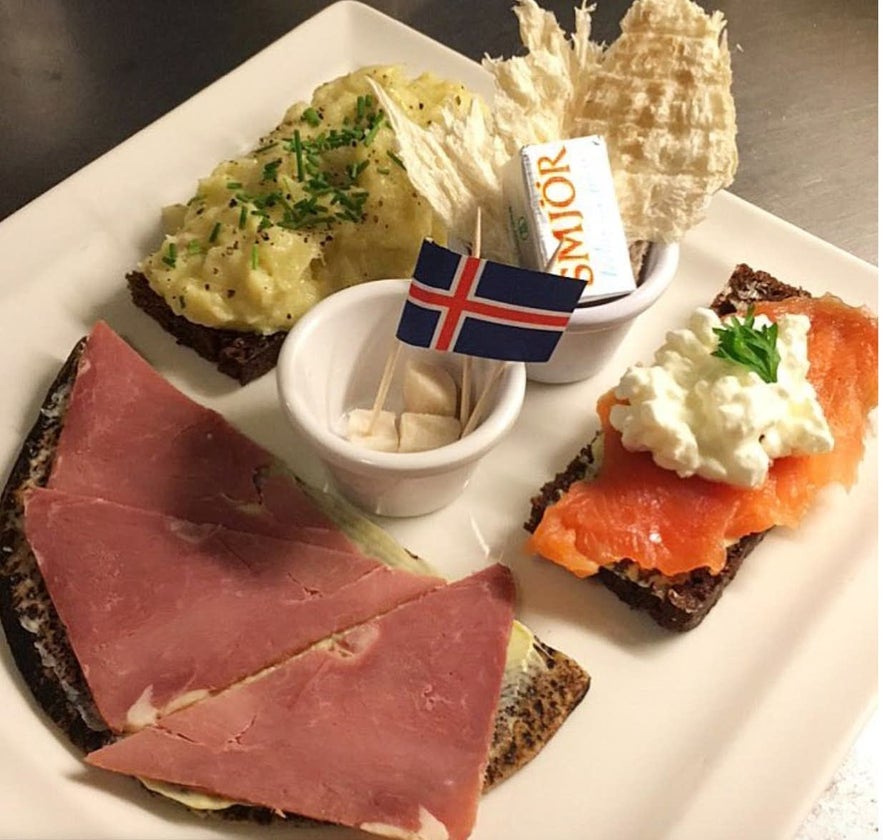
What do people eat in Iceland now? With new times come new technologies and knowledge. Icelanders have learned to utilize the natural surroundings, especially geothermal energy, which can heat buildings. The town of Hveragerdi boasts of a few greenhouses that, using geothermal energy, can grow vegetables and even fruit all year round.
Traveling abroad brought all kinds of ideas that, combined with traditional ingredients, created some incredible flavors in modern Icelandic gastronomy. In Reykjavik, you’ll find many multicultural restaurants and a burgeoning local food scene. The emphasis is on purity, simplicity, and freshness.
Fine dining restaurants, gastropubs, brasseries, bistros, and burger joints are aplenty in Reykjavik, and vegan and vegetarian restaurants are rising. In recent years, many food halls have opened up around the city where people can dine together with food from multiple vendors in one place.
However, traveling outside the city, you’ll find more traditional restaurants serving mostly fish and lamb. But those who are picky eaters should always be able to find a pizzeria or a fast food joint.
So, if you plan to travel to Iceland, you don’t have to worry about eating sharks or ram testicles. You’ll have plenty of food to choose from, and you're sure to find something to your liking.
What are the Icelandic dishes you’d most like to try? Or, if you have already visited, what did you think of Icelandic food? What was your favorite? We’d love to hear from you in the comments below.
Otros artículos interesantes
Localizaciones de películas en Islandia
¿Qué películas y series de televisión internacionales han sido filmadas en Islandia? ¿Por qué eligen los productores Islandia para rodar? Consulta esta lista de personajes famosos de Islandia A...Leer másNavidad en Islandia | Guía Definitiva de Tradiciones, Comidas Navideñas y Más
Entérate de todo lo que pasa en Islandia en Navidad. ¿Cuáles son las principales tradiciones navideñas en Islandia? ¿Por qué Islandia tiene 13 Yule Lads? ¿Es lo mismo que Papá Noel? ¿Cómo se celebra...Leer más
Yule Lads Islandeses y Gryla | Trolls de Navidad en Islandia
¿Quiénes son los Yule Lads islandeses? Si no es Papá Noel, ¿a quién entonces se celebra en Navidad? ¿Qué papel tiene la gigantesca Gryla en el folclore islandés en Navidad? ¿Y qué es el Gato de Navi...Leer más

Descarga la mayor plataforma de viajes a Islandia en tu móvil para gestionar tu viaje al completo desde un solo sitio
Escanea este código QR con la cámara de tu móvil y pulsa en el enlace que aparece para añadir la mayor plataforma de viajes a Islandia a tu bolsillo. Indica tu número de teléfono o dirección de correo electrónico para recibir un SMS o correo electrónico con el enlace de descarga.


